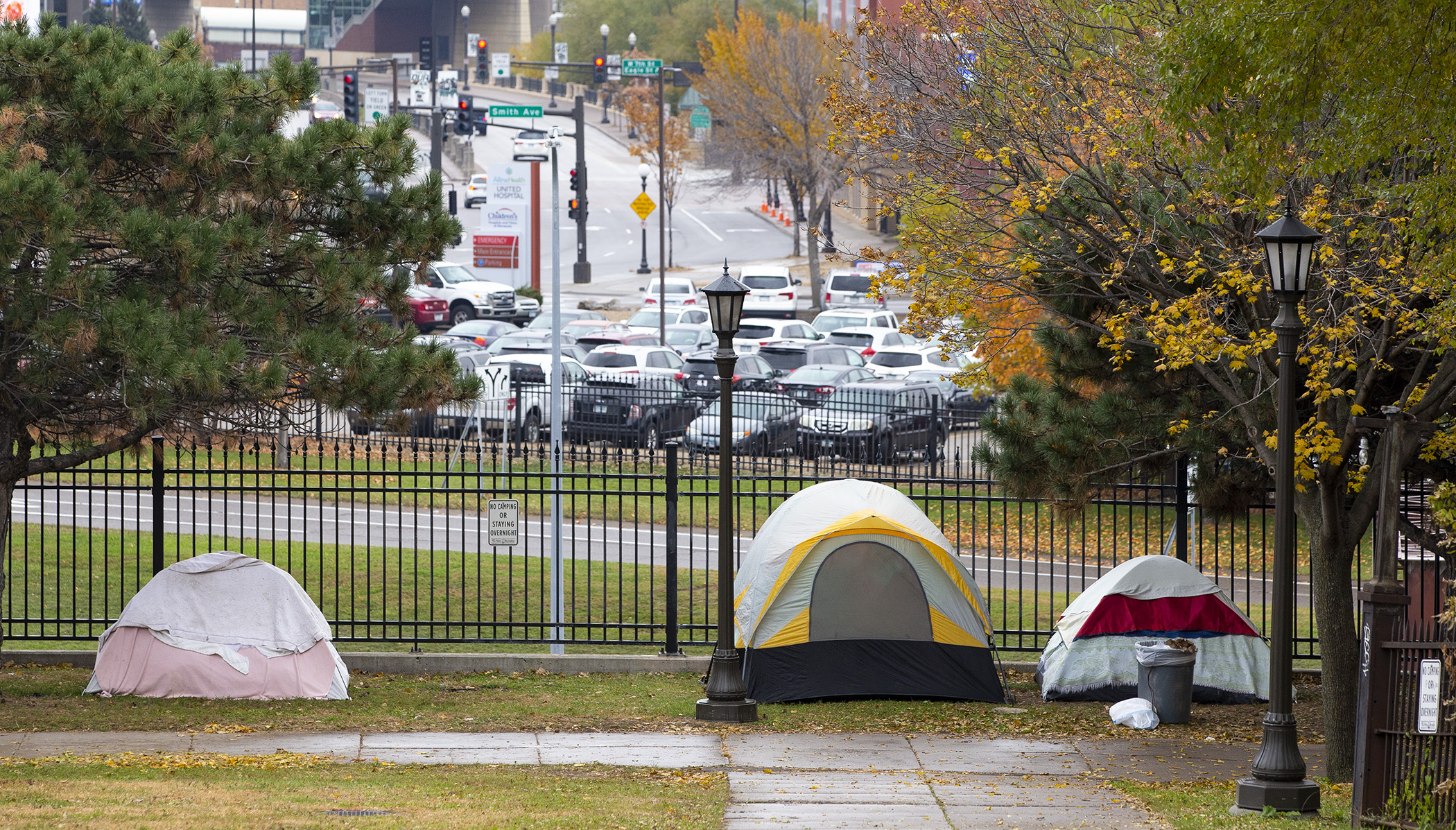Homelessness in MN sees slight decrease, but advocates say troubling trends persist

Fewer Minnesotans have experienced homelessness in recent years, but it's not all good news when it comes to homelessness in the state, lawmakers learned Wednesday.
Leaders of the Minnesota Interagency Council on Homelessness detailed the trends in a presentation to the newly created House Preventing Homelessness Division.
The number of people experiencing homelessness in the state has decreased about 5% since 2014, when the agency launched a plan to end and prevent homelessness, officials said. But the number of adults without children experiencing homelessness has increased 27% during that time, and the number of people experiencing chronic homelessness has increased 47%, up to 1,787 individuals.
Additionally, the number of people staying outdoors has increased by 145%, up to 1,949 people.
Eric Grumdahl, the council’s deputy director, said the increase is in part because funding for the shelter system in the state has never kept up with demand.
Cathy ten Broeke, Minnesota Housing Finance Agency assistant commissioner and executive director of the council, said the increase also correlates with more competition for affordable housing.
There aren't enough housing units available for Minnesota families with low incomes, according to the council. As a result, more than 60% of low-income renters are severely cost-burdened, meaning they spend more than half of their income on housing.
Households are considered cost-burdened when they spend more than 30% of their income on housing.
Wide racial disparities also exist when it comes to homelessness. A 2019 homelessness count found that American Indians in Minnesota were 27 times more likely to be homeless than white Minnesotans, while Black Minnesotans were 10 times more likely to be homeless than whites. Additionally, nearly two-thirds of people experiencing homelessness have a serious mental illness, over half have chronic physical health conditions and nearly one-quarter have a substance-use disorder, according to the council.
Grumdahl said people experiencing homeless are distributed throughout Minnesota, noting that 34% who were identified in the most recent count were outside the metro area.
Since the start of the COVID-19 pandemic, millions of dollars have gone into preventing homelessness and supporting people in need of housing assistance, according to the council. That includes $100 million in federal relief funds that have gone to the state's COVID-19 Housing Assistance Program.
Since April, 909 people experiencing homelessness and staff who work with them have tested positive for the disease, the council reported.
Related Articles
Search Session Daily
Advanced Search OptionsPriority Dailies
Ways and Means Committee OKs proposed $512 million supplemental budget on party-line vote
By Mike Cook Meeting more needs or fiscal irresponsibility is one way to sum up the differences among the two parties on a supplemental spending package a year after a $72 billion state budg...
Meeting more needs or fiscal irresponsibility is one way to sum up the differences among the two parties on a supplemental spending package a year after a $72 billion state budg...
Minnesota’s projected budget surplus balloons to $3.7 billion, but fiscal pressure still looms
By Rob Hubbard Just as Minnesota has experienced a warmer winter than usual, so has the state’s budget outlook warmed over the past few months.
On Thursday, Minnesota Management and Budget...
Just as Minnesota has experienced a warmer winter than usual, so has the state’s budget outlook warmed over the past few months.
On Thursday, Minnesota Management and Budget...